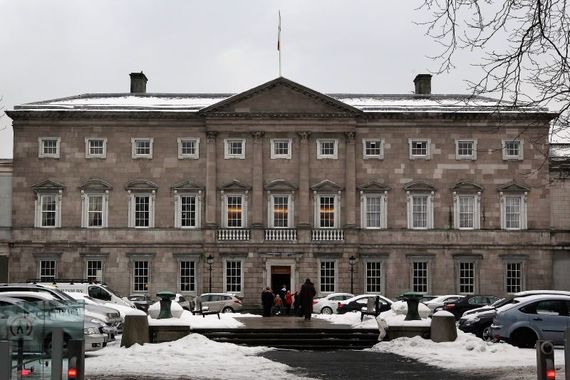The celebrated architect passed away on December 8, 1831, leaving behind a legacy that stands at the center of American power. We look back at the life of the immigrant who won a competition to build the President's House and changed history forever.
Raised in County Kilkenny, James Hoban trained as a carpenter and wheelwright before honing his architectural craft. After immigrating to the United States in the aftermath of the Revolutionary War, he emerged as one of America’s most influential architects—winning a national contest to design the presidential mansion in Washington, D.C., and later overseeing its reconstruction after it was destroyed during the War of 1812.
As a boy, Hoban trained as a carpenter and wheelwright and from those beginnings gradually acquired the skills that enabled him to win that competition and design one of the most famous buildings in the world. Of course, seeing as the home of the President of the United States is located in Leinster House, the home of the Irish Parliament in Dublin, it seems evident that an Irishman was behind it.
Born in c. 1762 in Callan, County Kilkenny, Hoban was trained in the Neoclassical (Georgian in Britain and Ireland) style and worked in this design tradition throughout his architectural career. He immigrated to the United States just after the Revolutionary War and first settled in Philadelphia.
He moved on to South Carolina, where he designed the old state capitol building in Columbia.
It was at George Washington’s suggestion that Hoban went to the federal capital in 1792 and submitted a plan for the presidential mansion in Washington, DC. Hoban won the national competition and was commissioned to build the White House. He was also awarded $500 and a lot in the District of Columbia.
The cornerstone of the famous house was laid in 1793, and work continued until 1801. Hoban also supervised the reconstruction of the building after it was burned by the British, led by Irishman General Robert Ross, following their capture of Washington during the War of 1812.
The design of the White House was generally influenced by Leinster House in Dublin and by the main facade shown in plate 51 of James Gibbs’ Book of Architecture (London, 1728). Leinster House was constructed c. 1750 for the Duke of Leinster. Hoban greatly admired the structure and its designer, Richard Cassels.
Leinster House, Irish government buildings, in Dublin. 
From 1793 to 1802, Hoban was one of the superintendents overseeing the erection of the Capitol, as designed by William Thornton. The Kilkenny man was also responsible for the design of the Grand Hotel (1793–95), the Little Hotel (1795), and his last federal commission, the State and War Offices (1818), all in Washington, DC.
Many details of Hoban's life remain a mystery. During his lifetime, he was not the legendary figure he has since become. His personal and business papers were mainly lost in a fire in the 1880s and survived only in scattered drawings, legal documents, and newspaper notices.
He died on December 8, 1831.
* Originally published in 2017 and updated in December 2025.




Comments